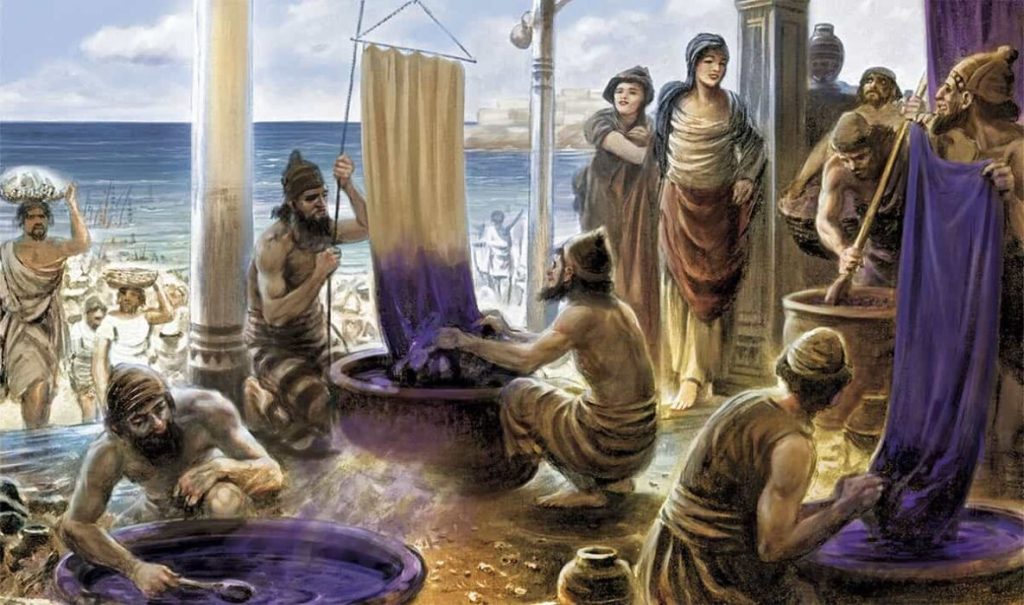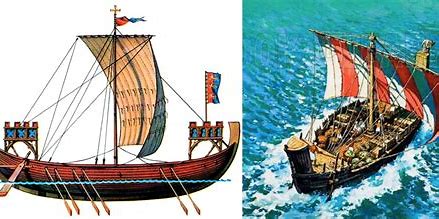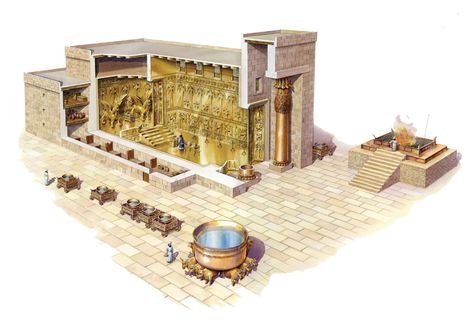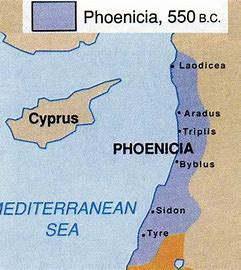Interesting Facts about the Phoenicians
Introduction
The Phoenician people of ancient history were and still are an enigma. Considered by historians today to be a distinct civilization, they did not have their own kingdom or empire. Rather, Phoenicia (1st millennium BC) was made up of a series of independent city-states that occupied the coastal area of what we know as Northern Israel, Lebanon and Syria. The most important of these city-states were Arwad, Byblos, Berot (Beirut today), Sidon, Sarepta and Tyre. They shared a common language and writing system (script) in addition to several distinctive cultural characteristics/traits. Maritime trading activities further unified them, and they would come to each other’s aid in time of war. Not wishing to engage in campaigns of conquest, their merchants and sailors built up their economies, while their explorers found new lands for resource acquisition, trade and colonization.
It is interesting to note that they did not identify themselves as Phoenicians, but by the city-state that they were citizens of. In fact, the word Phoenician comes from the Greeks and is thought to be related to purple, a color only the Phoenicians could produce. The word also had no equivalent in the Phoenician language as well as any of the other languages of the ancient Near East.

They Invented the Color Purple
The Phoenicians not only invented the color purple, they also maintained a monopoly on it that spanned many centuries, earning them a literal fortune over the years. The rare and expensive color was so significant that even the Bible mentions it in Ezekiel 27:7 ‘Your awnings were made of finest cloth, Of purple from the island of Cyprus.’
‘The basic raw material was an opaque liquid that was obtained from the mucus glands of two types of sea snail, Murex trunculus and Murex brandaris. The former was used to make a blue-purple dye known as royal blue while the latter was used to make Tyrian purple. Both dyes were indelible and did not fade easily, a rare property for ancient colorants.’ [1]
Each mollusk produced very little dye, so it took tens of thousands of them to dye a single garment, making them prohibitively expensive and a sign of wealth and status. This continued well into the Roman and Byzantine Periods, long after the Phoenicians as a distinct people were gone.

They Invented the Alphabet (almost)
The Phoenicians have been credited with inventing and spreading the world’s first alphabet, but that is not technically true. What they did do was take the North Semitic alphabet, the first true script, and adapted it to their own use. That was what they spread across the Mediterranean in its various evolutions. However, the basics from the North Semitic script remained: ’22 letters, written from right to left, with only consonants represented and phonetic values unchanged from the North Semitic script.’ [2] What is even more significant is that ‘it is the probable ancestor of the Greek alphabet and, hence, of all Western alphabets,’ [3] thus tying the Phoenicians to us today through all the intervening centuries. That is their true claim to fame in this sphere.

They Invented Glass Manufacturing
The skill of the glassmakers of Sidon was so extraordinary that it was thought that they had invented the substance. [4] Roman writer Pliny the Elder related that ‘A ship belonging to traders in soda once called here, so the story goes, and they spread out along the shore to make a meal. There were no stones to support their cooking-pots, so they placed lumps of soda from their ship under them. When these became hot and fused with the sand on the beach, streams of an unknown liquid flowed, and this was the origin of glass.’ [5]
The Phoenicians mastered the production of glass products and offered their customers a wide variety of goods made from it. From the mass production of small amphoriskoi, aryballoi, alabastra and juglets, to the more exotic monochrome and mosaic-glass inlays set in ivory and in more exclusive furniture, Phoenician glass found its way all across the Mediterranean region. ‘On the whole, all through the 2nd and 1st millennia BC, glass was a highly prized material used for making receptacles for precious ointments and drinking vessels. This is reflected in the equation of glass with gold in Job (28.17).’ [6]
‘An epoch-making advance occurred in the 2nd half of the 1st century BC with the discovery of glass blowing. Phoenician glassblowers maintained a high standard in blowing techniques all through the Roman period. Their mould-blown vessels of the 1st and 2nd centuries AD have remarkable decorations in relief bearing Greek inscriptions and often of beautiful colors.’ [7] Their glass objects provided them with yet another valuable income stream that made their societies wealthy and the envy of others.

They Developed Open-sea Navigation
The Phoenicians were the first civilization to develop a high level of ship-building skill that enabled them to navigate the often dangerous waters of the Mediterranean Sea. This seems to have been perfected at Byblos where the first design of the curved hull was developed. [8] Prior to that, sailors would hug the coast to not only avoid getting lost, but to stay safe in case of a sudden change in sea conditions. Using the North Star to help them navigate on the open sea (which, curiously, was referred to as the Phoenician Star up to the 19th century [9]), the Phoenicians became the masters of international trade as they were able to set up sea links far and wide to bring a large variety of resources and goods to their customers.
Phoenician shipwrecks that have been discovered have shown us the types of products they transshipped around the Mediterranean Sea: ‘There were ingots of copper and tin, as well as storage vessels which are thought to have contained unguents, wine and oil, glass, gold and silver jewelry, precious objects of faience (glazed earthenware), painted pottery tools, and even scrap metal.’ [10]
Regarding the ships themselves, the Ancient Greeks referred to them as gauloi (tubs). Two eighth century BC Phoenician vessels discovered off the coast of Israel measure 52 feet (15.8 meters) in length and 20 feet (6.1 meters) wide. As the Greeks had suggested, they are tubby compared to other ships from the period. This attribute gave the ships stability in rough seas and allowed them to carry more cargo. For example, these two specimens carried 12 tons of wine each! [11]

Demise
For most of their history, the Phoenicians grew and flourished alongside, and at times, in the service of, the large kingdoms and empires around them: Assyria, Babylon, Egypt and Persia. Alexander the Great proved to be their permanent undoing when he captured Tyre in 332 BC killing half the population and selling the other half off into slavery. Along with subduing the other Phoenician cities, Phoenicia fell under ‘strict Macedonian rule for the next 270 years, and by the end of the first century B.C. it had become so Hellenized that Plutarch referred to its inhabitants as Hellenes.’ [12] Pompey conquered the area in 64 BC, leading to Phoenicia being incorporated into the Roman province of Syria. Thus, romanization followed a long period of Hellenization. ‘By the close of the first century A.D. there were very few remnants of the indigenous culture that had existed before the arrival of the Macedons and Romans.’ [13]
The Prophet Ezekiel wrote about an earlier, less permanent downfall of the Phoenicians, especially Tyre (one of the strongest city-states), due to the Babylonian King Nebuchadnezzar’s conquests. Experiencing the terror of Nebuchadnezzar himself when Jerusalem was captured and the Jews were exiled to Babylon around the same time Phoenicia was subdued, he wrote: Ezekiel 26: 15 Thus saith the Lord God to Tyrus (Tyre); Shall not the isles shake at the sound of thy fall, when the wounded cry, when the slaughter is made in the midst of thee? 16 Then all the princes of the sea shall come down from their thrones, and lay away their robes, and put off their broidered garments: they shall clothe themselves with trembling; they shall sit upon the ground, and shall tremble at every moment, and be astonished at thee.

King Solomon’s Temple
When King Solomon decided to build the First Temple, he called on Hiram, the King of Tyre, for aid. That shows that the relationship between the Phoenicians and the Kingdom of Israel was not only peaceful, but that they had strong commercial ties as well. The Bible’s 1 Kings Chapter 5 relates the story:
1 Now Hiram king of Tyre sent his servants to Solomon, because he heard that they had anointed him king in place of his father, for Hiram had always loved David.
2 Then Solomon sent to Hiram, saying:
3 You know how my father David could not build a house for the name of the Lord his God because of the wars which were fought against him on every side, until the Lord put his foes under the soles of his feet.
4 But now the Lord my God has given me rest on every side; there is neither adversary nor evil occurrence.
5 And behold, I propose to build a house for the name of the Lord my God, as the Lord spoke to my father David, saying, “Your son, whom I will set on your throne in your place, he shall build the house for My name.”
6 Now therefore, command that they cut down cedars for me from Lebanon; and my servants will be with your servants, and I will pay you wages for your servants according to whatever you say. For you know there is none among us who has skill to cut timber like the Sidonians.
7 So it was, when Hiram heard the words of Solomon, that he rejoiced greatly and said, Blessed be the Lord this day, for He has given David a wise son over this great people!
8 Then Hiram sent to Solomon, saying: I have considered the message which you sent me, and I will do all you desire concerning the cedar and cypress logs.
9 My servants shall bring them down from Lebanon to the sea; I will float them in rafts by sea to the place you indicate to me, and will have them broken apart there; then you can take them away. And you shall fulfill my desire by giving food for my household.
10 Then Hiram gave Solomon cedar and cypress logs according to all his desire.
15 Mind-Blowing Facts About the Phoenicians You Never Knew (the961.com)
Phoenician History – Phoenicians in Phoenicia
Phoenicia – World History Encyclopedia
Phoenician alphabet | Definition, Letters, & History | Britannica
The Phoenicians built their trade empire with a monopoly on purple dye (nationalgeographic.com)Phoenician Glass
